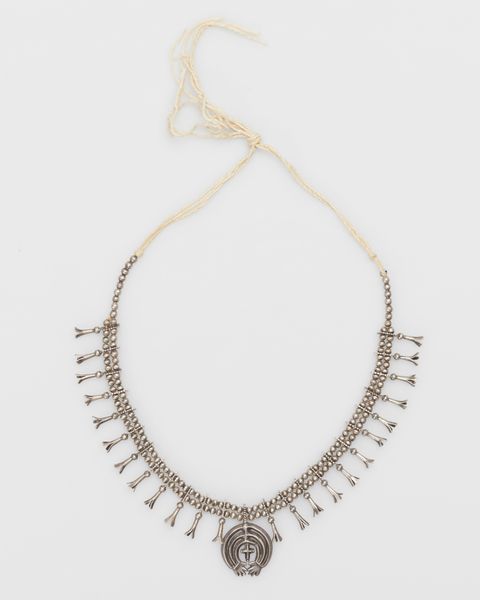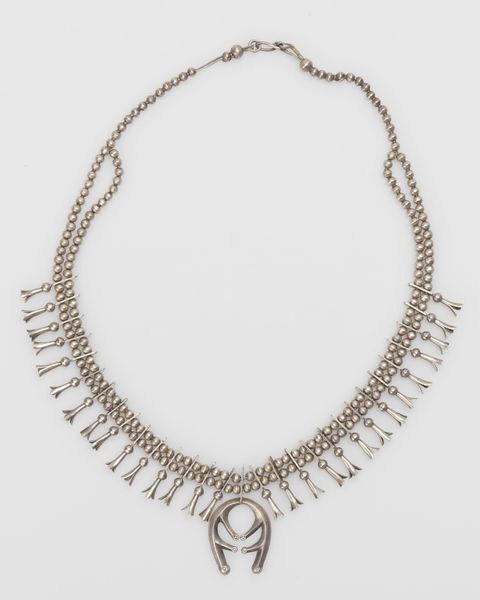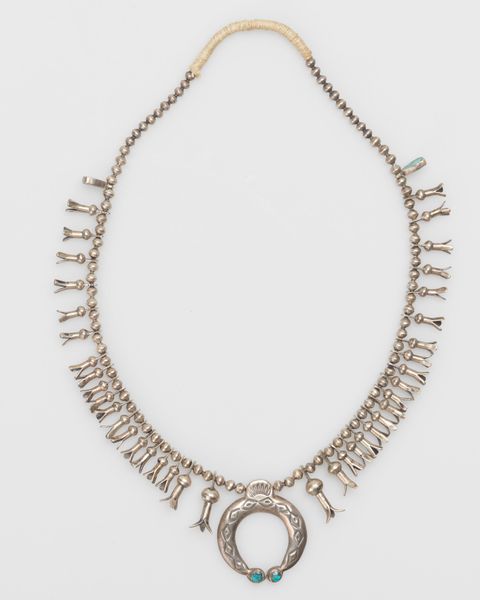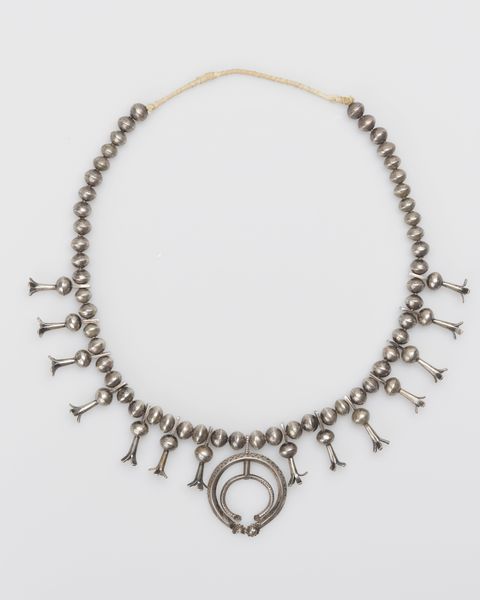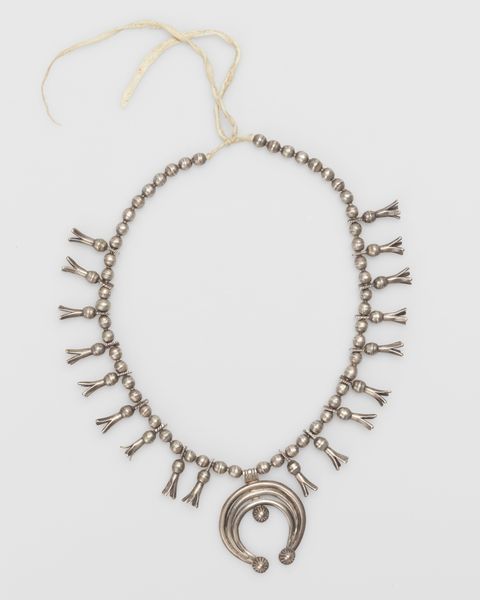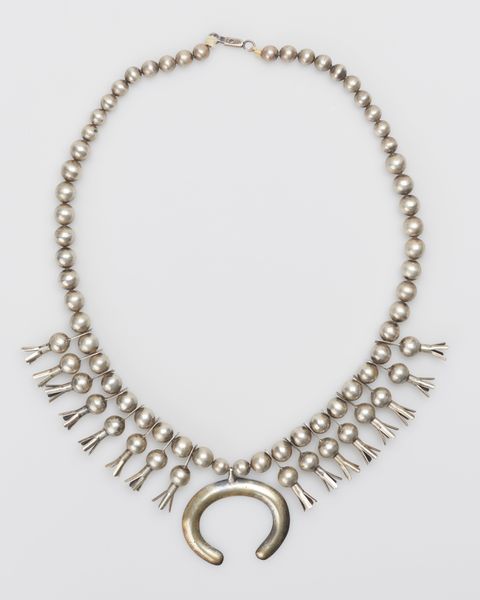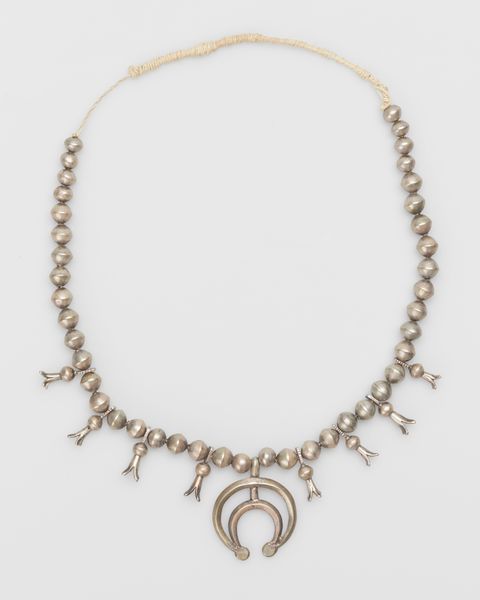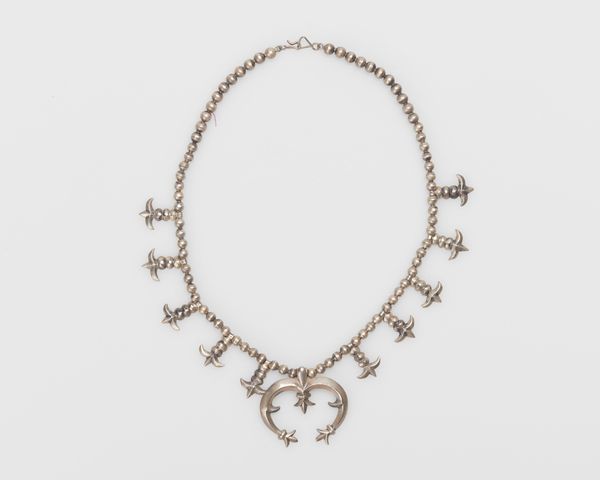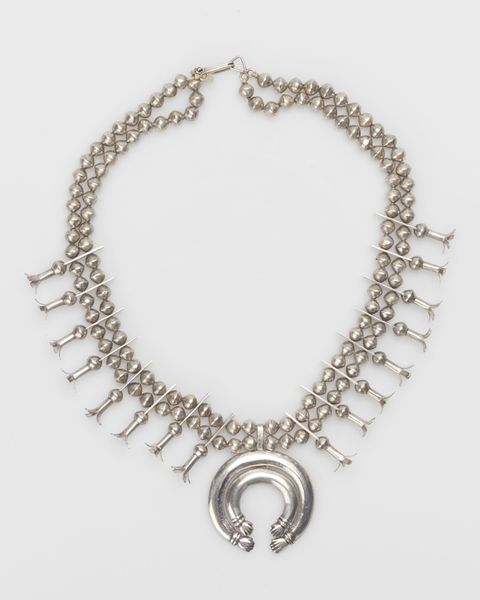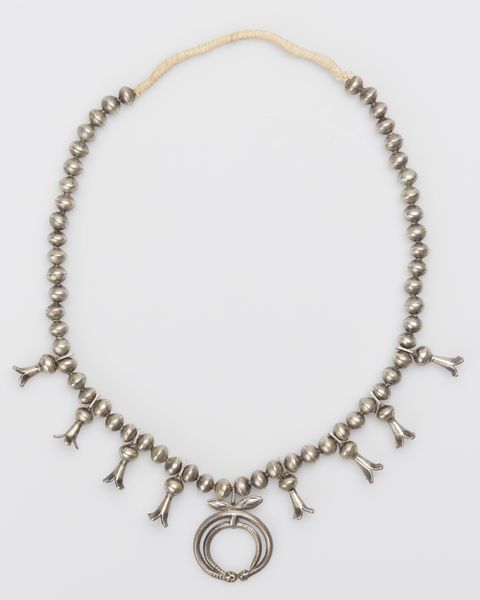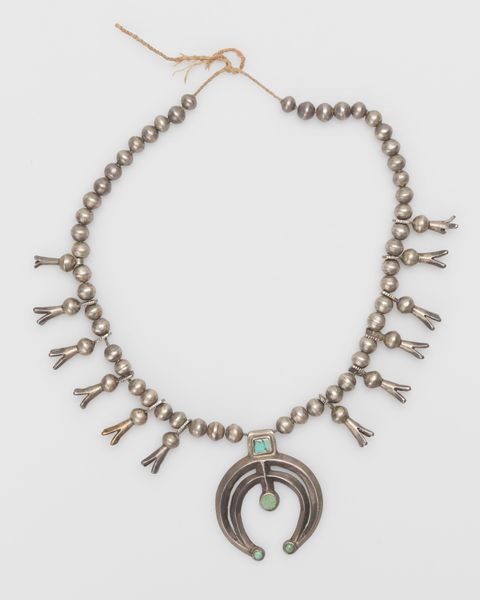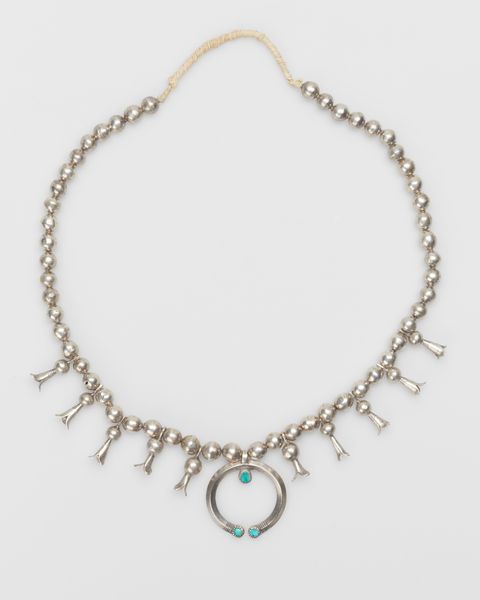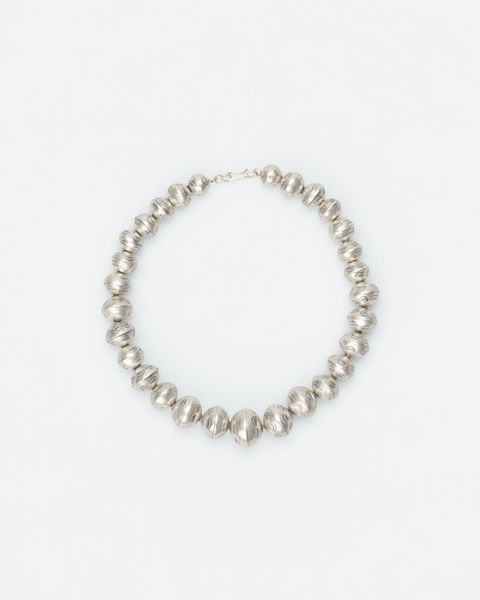
silver, metal
#
silver
#
metal
#
indigenous-americas
Copyright: Public Domain
Editor: This striking silver necklace, a Pueblo piece from the 1940s, uses simple forms—beads and feathers—to create a sophisticated, almost regal effect. What histories and ideas do you see reflected in this piece? Curator: That’s a perceptive reading. These necklaces, particularly those incorporating feathers, aren't merely decorative. We need to examine their place in the intricate history of Indigenous representation and self-representation. Silverworking was both an art form and a form of resistance in the face of colonial pressures. What do you notice about the depiction of the feathers? Editor: They're stylized, symmetrical. It makes me think about the careful balance of tradition and innovation within Indigenous art. Curator: Precisely. And consider what feathers signify—connection to spirit, flight, freedom. Placing these within the context of a culture actively fighting for autonomy adds layers of meaning. What socio-political tensions do you think might have been present in the 1940s for the Pueblo people? Editor: I imagine the pressures of assimilation were strong then. Wearing something like this necklace would have been a powerful statement. Curator: Absolutely. These objects were never created in a vacuum. Understanding the history informs our understanding of the artistry. It’s more than just decorative art; it is a declaration. Editor: Thinking about it that way, it transforms the necklace. It goes from being a pretty object to a really important cultural artifact. Curator: It encourages us to question how identities are expressed, negotiated, and sometimes, reclaimed. I'm glad this has broadened your perspective.
Comments
No comments
Be the first to comment and join the conversation on the ultimate creative platform.
